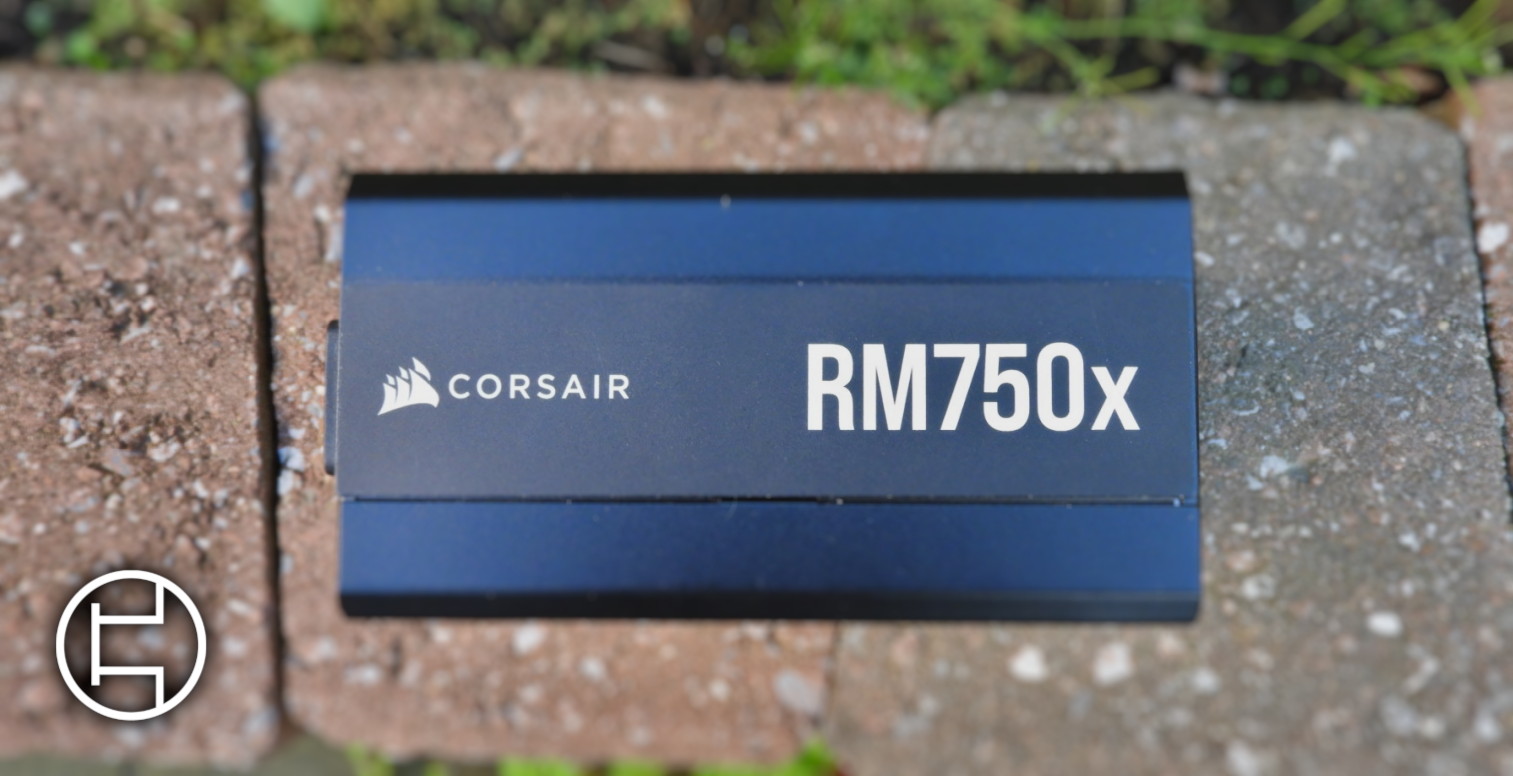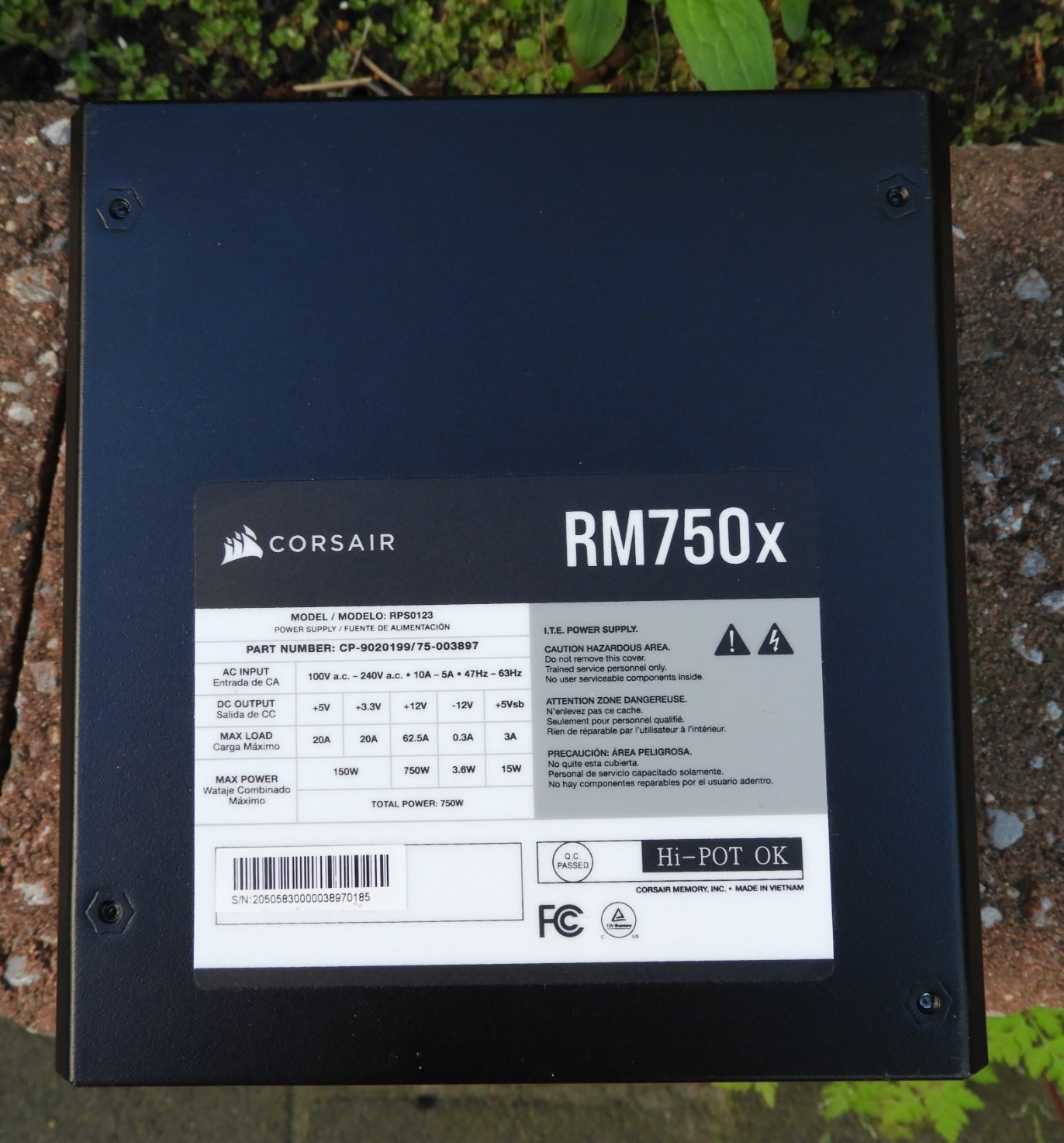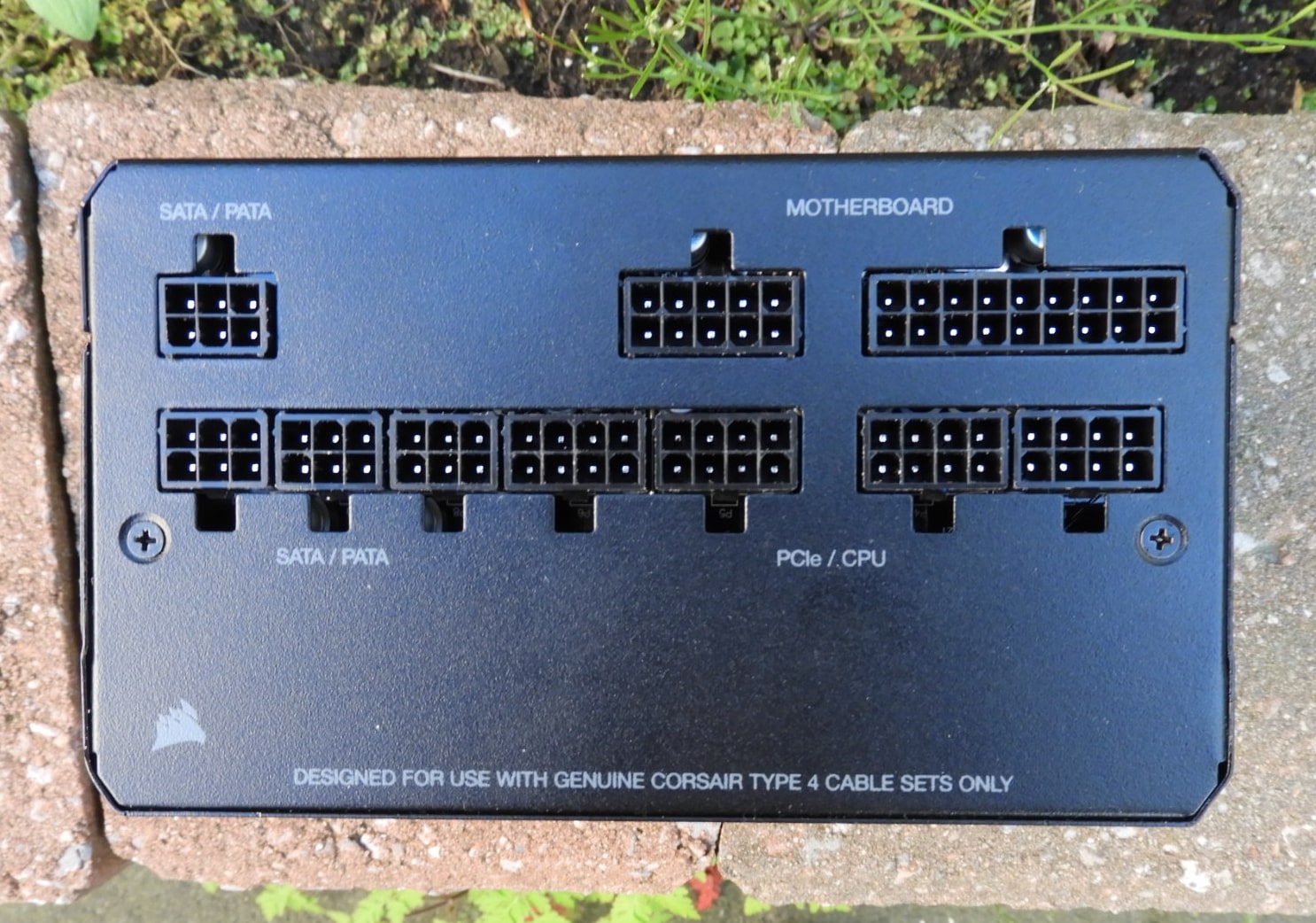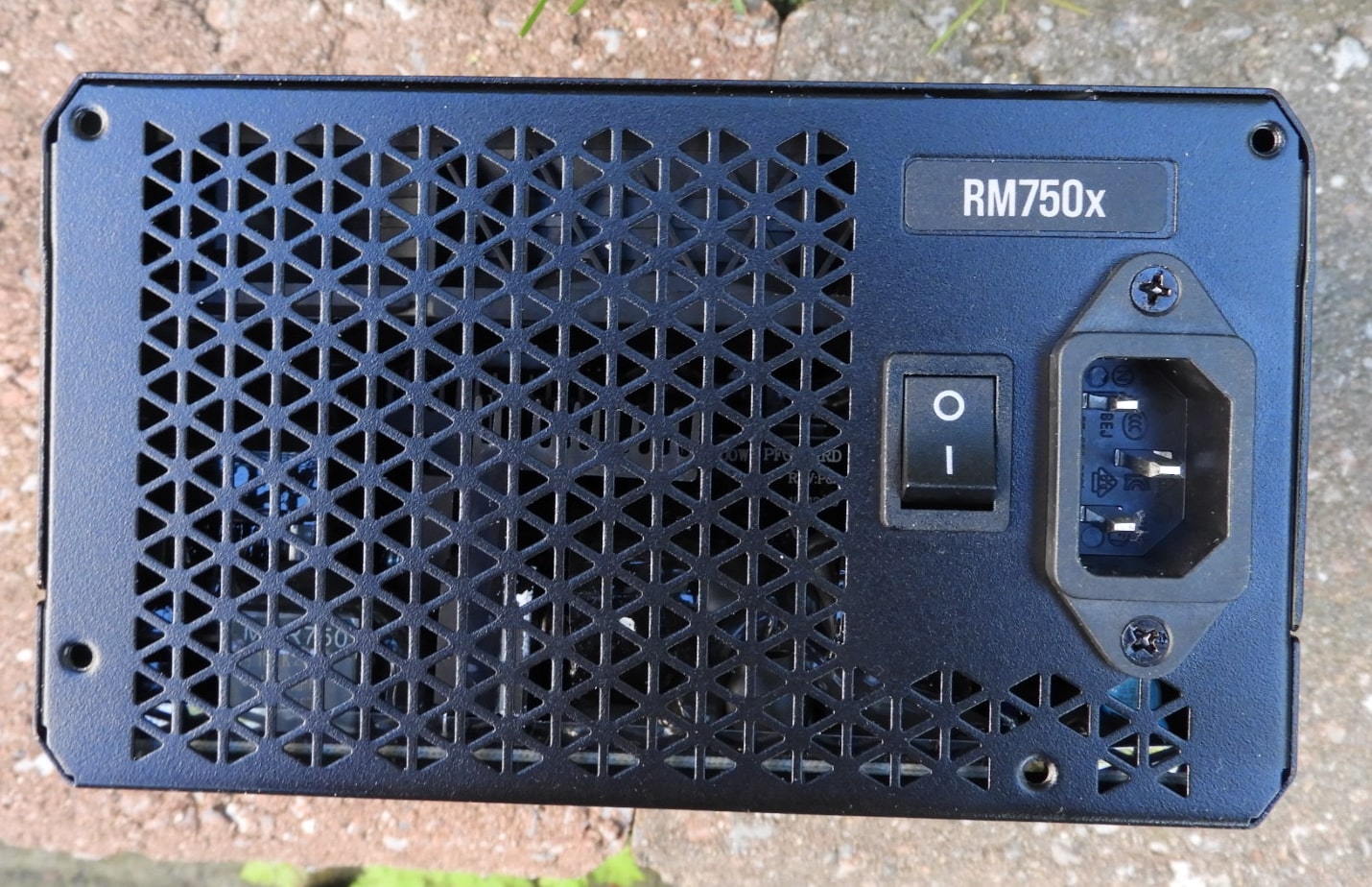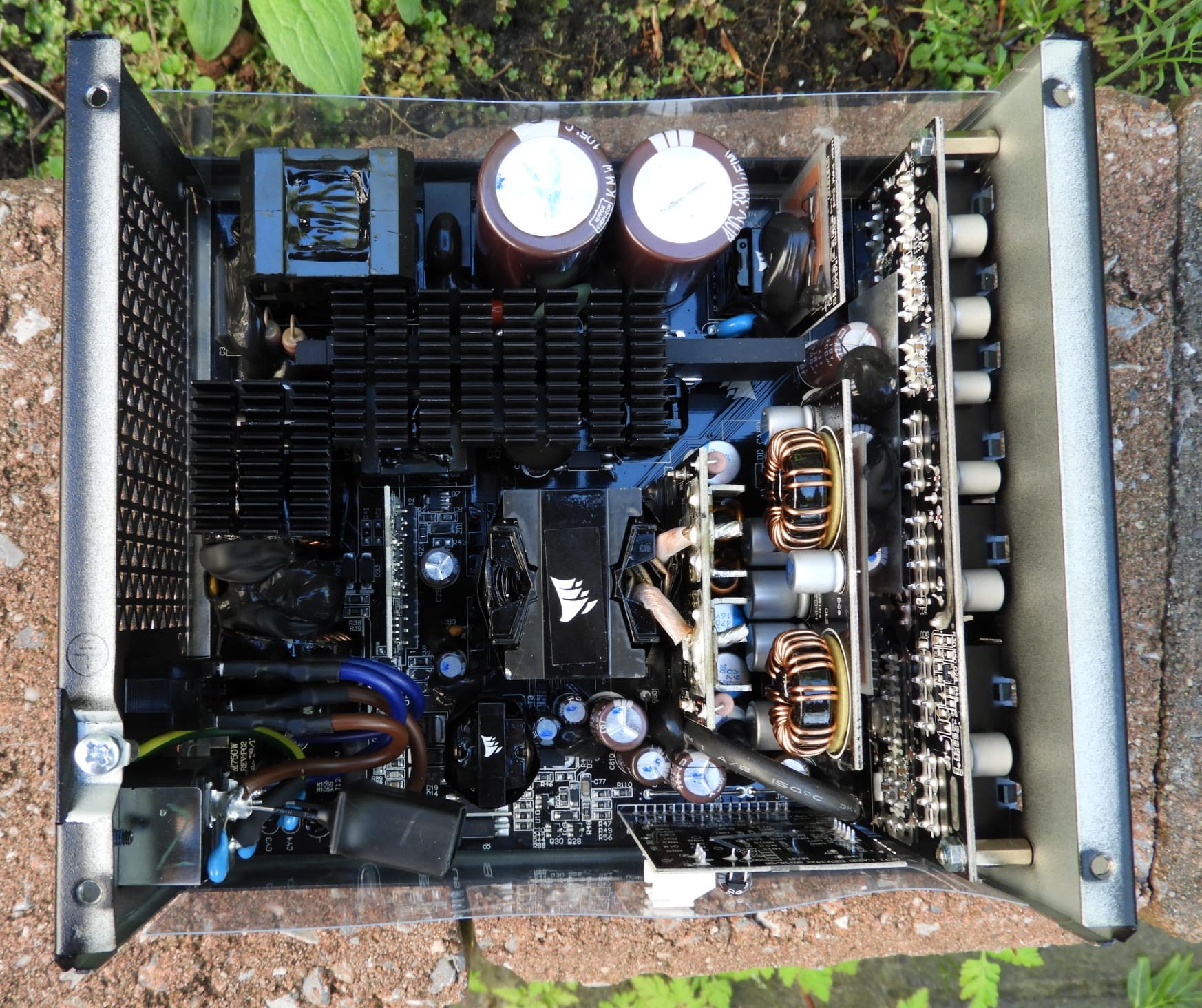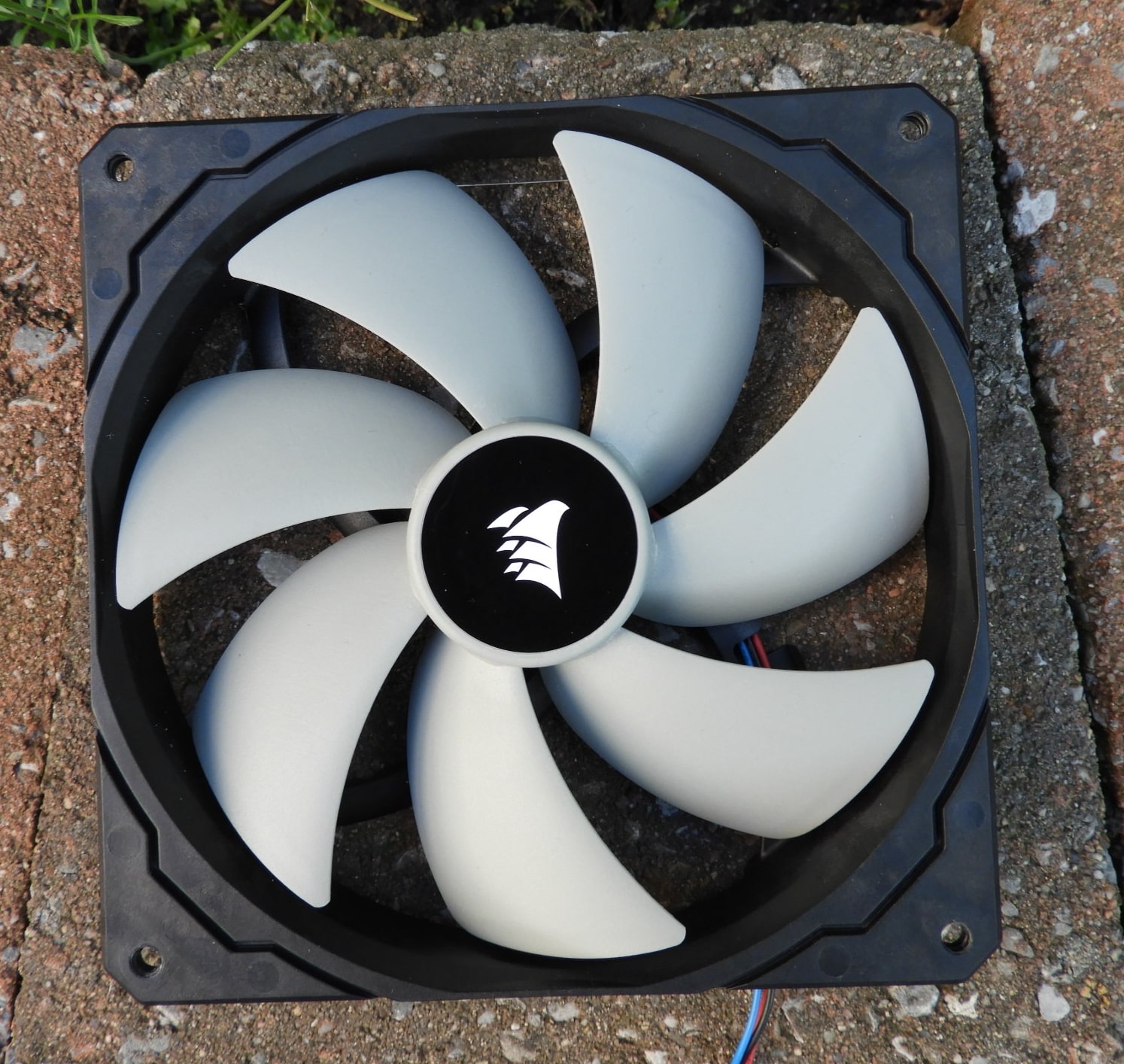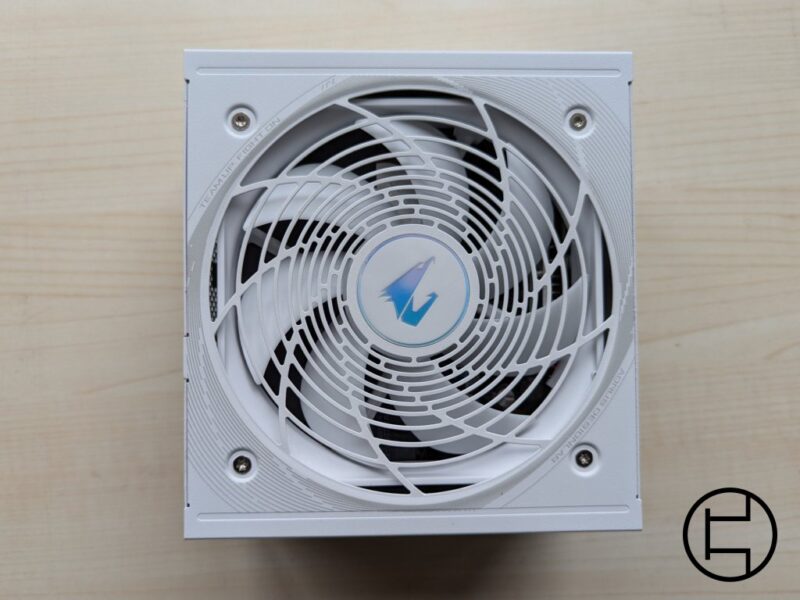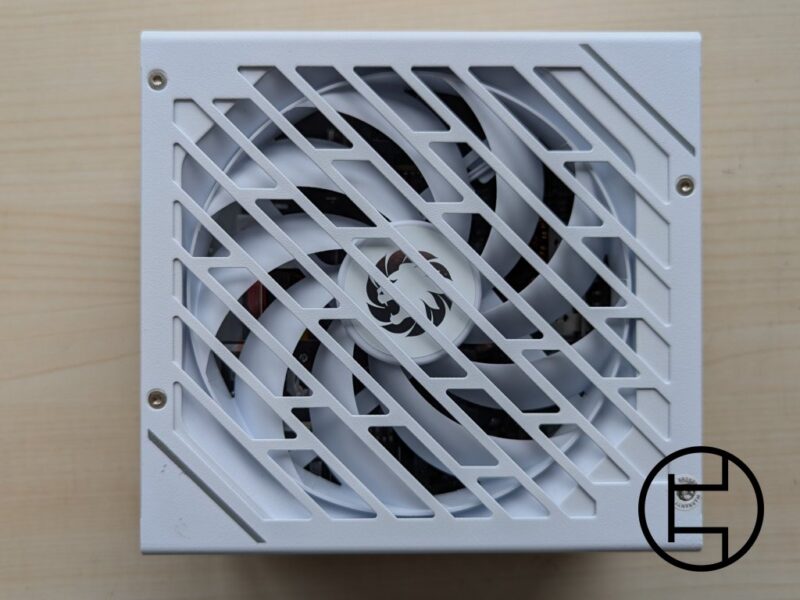Introduction
Today we’ll be covering the new RMx 2021 from Corsair, a modified version of the RMx 2018. We’ve been provided a sample to analyze. They’re offering a newer version of the same platform with higher low-load efficiency, a new MegLev fan and an updated housing. How will it hold up and is it worth considering for your upcoming system?
General Specifications
| Brand | Corsair |
| Model | RM750x (2021) |
| Wattage | 750w |
| Introduction year | 2021 |
| Modularity | Full |
| Warranty | 10 years |
Power Specifications
| 3.3v | 5v | 12v | 5vsb | -12v |
| 20a | 20a | 62.5a | 3a | 0.3a |
The usual can be seen once again here. It provides full capacity on the 12v rail and uses a single rail setup.
Cables
| Cable type | Cable count | Connector count | Gauge | In-cable capacitors |
|---|---|---|---|---|
| ATX 20+4 pin | 1 | 1 | 16-20 AWG | Yes |
| EPS12v 4+4 pin | 2 | 1 | 18 AWG | Yes |
| PCIe 6+2 pin | 2 | 2 | 16-18 AWG | Yes |
| SATA | 1 | 4 | 18 AWG | No |
| SATA | 2 | 3 | 18 AWG | No |
| 4-pin peripheral | 1 | 4 | 18 AWG | No |
Corsair gives you the cables you expect of a 750w these days. The only change I’d like to see is the same I asked for in the Aresgame AGT850 review, having another PCIe cable included to have 3 individual cables leading to the GPU. Just like the AGT, it includes dual EPS connectors, something overkill for most consumer CPUs, but still a widely requested feature.
The cables also feature in-cable capacitors. Some find these to be annoying because it makes the cables more stiff, but from the other side the capacitors do offer additional ripple filtering, which will show itself in later parts of this review.
External
Here we see the change most people will see between the 2019 and 2021 version. The outer design has been renewed to fit Corsair’s new general theme they’ve also applied to their RAM and other products. I’m personally more a fan of a simple mesh design because of it’s efficiency, but the current style gives it a very premium look.
Protections
| OPP | Yes (WT7502R/IN1S313i) |
| OCP | Yes (WT7518) |
| OTP | Yes (IN1S313i) |
| UVP | Yes (WT7502R/IN1S313i) |
| OVP | Yes (WT7502R/IN1S313i) |
| SCP | Yes (WT7502R/IN1S313i) |
| MOV | Yes |
The only minor thing we lack here is having the option for setting a multirail OCP, but otherwise this is better than usually is expected with even having 12v OCP integrated.
Parts breakdown
| OEM | CWT |
| Platform | Custom |
| Input Voltage | 100-240v |
| Primary Converter | APFC Half Bride LLC |
| Rectifier | Synchronous Rectification |
| Regulator | DC-DC |
| Fan | Corsair NR140ML (12v, 0.27a) |
| Bearing | Magnetic Levitation |
| Rated Lifespan | 100k Hours (50c) |
| PCB Type | Double Sided |
| Bulk Capacitors | 2x Nippon Chemi-Con (400v, 470+390uF, 105c) |
| Main Switches | 2x ON Semiconductor FCPF190N60E (600v, 13,1a, 100c) |
| APFC Controller | Champion CM6500UNX + CM03X |
| Resonant Controller | Champion CU6901VAC |
| 12v MOSFETs | 6x ON Semiconductor NTMFS5C430N (40v, 131a, 100c) |
| DC-DC Converters | 2x UBIQ QM3054M6 (30V, 61A, 100c) + 2x QN3107M6N (30v, 70a, 100c) |
| DC-DC Controller | UPI Semi uP3861P |
| Filtering Capacitors (Electronic) | 14x Nippon Chemi-Con, 1x Rubycon |
| Filtering Capacitors (Polymer) | 33x Nichicon |
| Supervisor IC | Weltrend WT7502R + WT7518 + Infinno IN1S313i |
| 5VSB Rectifier | MakoSemi PS1045L + InPower Semiconductor ISD04N65A |
| Standby PWM Controller | On-Bright OB5282 |
The RMx 2021 is very similar to it’s 2019 counterpart, the only major differences to see here being it’s fan and some minor changes to achieve higher low-load efficiency by using burst mode. As the RMx 2019 already performed very well, Corsair had little reason to make major changes to the platform, which means the dimensions and most of the parts are still the same high quality parts they’ve been providing.
Internal
Electrical Performance
Test Equipment
| Electronic Loads | 4x Chroma 63601-5, 2x Chroma 63600-2, 20x 63640-80-80, 2x 63610-80-20 |
| AC Sources | Chroma 6530, Keysight AC6804B |
| Power analyzers | N4L PPA1530 x2 |
| Sound analyzer | Bruel & Kjaer 2270 G4 |
| Microphone | Bruel & Kjaer Type 4955-A |
| Data loggers | 2x Picoscope TC-08, 2x Labjack U3-HV |
| Tachometer | 2x UNI-T UT372 |
| Digital multimeters | Keysight U1273AX, Fluke 289, Keithley 2015 - THD |
| UPS | CyberPower OLS3000E 3kVA x2 |
| Transformers | 3kVA x2 |
The equipment isn’t ours and testing done isn’t by us, but by a third party called Cybenetics and will be used in this review. You can find their efficiency standard ETA, noise standard LAMBDA, methodology, power supply database and more on their site. The results we’re showing here is based off the RM750x 2021 230v report.
Efficiency
| Load | DC (Watt) | AC (Watt) | Efficiency |
|---|---|---|---|
| Low load 1 | 19.989 | 25.023 | 79.883% |
| Low load 2 | 39.979 | 46.652 | 85.696% |
| Low load 3 | 60.008 | 68.288 | 87.875% |
| Low load 4 | 79.958 | 91.165 | 87.707% |
| Load 1 | 74.989 | 85.941 | 87.256% |
| Load 2 | 150.031 | 164.916 | 90.974% |
| Load 3 | 225.037 | 242.732 | 92.710% |
| Load 4 | 300.045 | 323.105 | 92.863% |
| Load 5 | 374.594 | 404.691 | 92.563% |
| Load 6 | 449.515 | 487.677 | 92.175% |
| Load 7 | 524.858 | 572.419 | 91.691% |
| Load 8 | 600.165 | 658.345 | 91.163% |
| Load 9 | 674.714 | 744.361 | 90.643% |
| Load 10 | 749.938 | 832.890 | 90.040% |
| Load 11 | 825.169 | 922.732 | 89.427% |
| Crossload 1 | 151.044 | 180.598 | 83.635% |
| Crossload 2 | 760.207 | 839.955 | 90.506% |
The unit easily reaches it’s promised level of 80+ gold, and with that also meets ETA Gold without any issue, just like the older RMx models did. One of the main differences from the old RMx is also visible here, showing a higher efficiency at low loads.
Efficiency 5vsb
| Load | DC (Watt) | AC (Watt) | Efficiency |
|---|---|---|---|
| 5VSB 1 | 0.227 | 0.348 | 65.230% |
| 5VSB 2 | 0.454 | 0.639 | 71.049% |
| 5VSB 3 | 2.770 | 3.598 | 76.987% |
| 5VSB 4 | 5.028 | 6.442 | 78.050% |
| 5VSB 5 | 7.528 | 9.616 | 78.286% |
| 5VSB 6 | 14.965 | 19.167 | 78.077% |
here too nothing underwhelming to be found. The unit shows efficiency well above 70% at lower loads outside of the first.
Voltage regulation – Amperage
| Load | 12v amperage (A) | 5v amperage (A) | 3.3v amperage (A) | 5vsb amperage (A) |
|---|---|---|---|---|
| Low load 1 | 1.239 | 0.493 | 0.499 | 0.197 |
| Low load 2 | 2.478 | 0.990 | 1.001 | 0.396 |
| Low load 3 | 3.720 | 1.485 | 1.501 | 0.595 |
| Low load 4 | 4.925 | 1.982 | 2.001 | 0.794 |
| Load 1 | 4.426 | 1.981 | 2.003 | 0.994 |
| Load 2 | 9.889 | 2.975 | 3.004 | 1.194 |
| Load 3 | 15.725 | 3.473 | 3.508 | 1.394 |
| Load 4 | 21.559 | 3.970 | 4.011 | 1.595 |
| Load 5 | 27.020 | 4.965 | 5.017 | 1.795 |
| Load 6 | 32.529 | 5.962 | 6.021 | 1.996 |
| Load 7 | 38.083 | 6.957 | 7.028 | 2.198 |
| Load 8 | 43.638 | 7.958 | 8.035 | 2.400 |
| Load 9 | 49.570 | 8.459 | 8.525 | 2.400 |
| Load 10 | 55.310 | 8.961 | 9.046 | 3.009 |
| Load 11 | 61.658 | 8.967 | 9.053 | 3.011 |
| Crossload 1 | 0.116 | 18.001 | 17.998 | 0.000 |
| Crossload 2 | 62.516 | 1.000 | 1.002 | 1.000 |
This shows the amperages each respective load test is done at. This isn’t very interesting on it’s own, but will help understanding the table below this.
Voltage regulation – Voltages
| Load | 12v voltage (V) | 5v voltage (V) | 3.3v voltage (V) | 5vsb voltage (V) |
|---|---|---|---|---|
| Low load 1 | 11.975 | 5.072 | 3.310 | 5.070 |
| Low load 2 | 11.976 | 5.051 | 3.300 | 5.046 |
| Low load 3 | 11.979 | 5.048 | 3.298 | 5.041 |
| Low load 4 | 12.054 | 5.045 | 3.296 | 5.036 |
| Load 1 | 12.056 | 5.046 | 3.296 | 5.032 |
| Load 2 | 12.047 | 5.042 | 3.294 | 5.027 |
| Load 3 | 12.018 | 5.040 | 3.292 | 5.023 |
| Load 4 | 12.006 | 5.039 | 3.291 | 5.018 |
| Load 5 | 11.994 | 5.037 | 3.290 | 5.015 |
| Load 6 | 11.998 | 5.034 | 3.289 | 5.011 |
| Load 7 | 11.967 | 5.032 | 3.288 | 5.006 |
| Load 8 | 11.956 | 5.029 | 3.286 | 5.002 |
| Load 9 | 11.947 | 5.025 | 3.284 | 5.000 |
| Load 10 | 11.937 | 5.022 | 3.283 | 4.986 |
| Load 11 | 11.928 | 5.019 | 3.281 | 4.983 |
| Crossload 1 | 12.021 | 5.026 | 3.288 | 5.077 |
| Crossload 2 | 11.947 | 5.026 | 3.283 | 5.012 |
And here is where the unit shines, showing a very tight voltage regulation on all rails, very close to nominal. Nothing to complain here.
Ripple measurements
| Load | 12v (mv) | 5v (mv) | 3.3v (mv) | 5vsb (mv) | Pass/Fail (ATX) |
|---|---|---|---|---|---|
| Load 1 | 4.90 | 3.50 | 3.30 | 5.30 | Pass |
| Load 2 | 4.70 | 3.40 | 2.90 | 5.10 | Pass |
| Load 3 | 8.10 | 3.50 | 3.00 | 4.90 | Pass |
| Load 4 | 7.20 | 3.70 | 3.20 | 5.50 | Pass |
| Load 5 | 6.60 | 3.70 | 3.00 | 5.70 | Pass |
| Load 6 | 6.40 | 7.20 | 9.80 | 7.90 | Pass |
| Load 7 | 6.70 | 3.90 | 3.70 | 5.30 | Pass |
| Load 8 | 6.70 | 4.40 | 6.60 | 5.50 | Pass |
| Load 9 | 6.20 | 4.90 | 7.10 | 5.50 | Pass |
| Load 10 | 8.90 | 5.10 | 7.10 | 6.60 | Pass |
| Load 11 | 9.50 | 5.30 | 9.00 | 6.20 | Pass |
| Crossload 1 | 5.20 | 4.10 | 7.70 | 5.40 | Pass |
| Crossload 2 | 5.30 | 4.50 | 8.00 | 6.30 | Pass |
Here is where the unit really shines. Due to the use of in-cable capacitors the cables do get a bit more stiff, but it helps filter the ripple out together with the capacitors that are already in the unit itself. Showing no higher than 9.5 mv of ripple, this is well within the margin of ATX. ATX goes by the following:
- 12v = 120mv max
- 5v/3.3v/5vsb = 50mv max
Fan speed + noise
| Load | Fan speed (RPM) | Noise (dBA) |
|---|---|---|
| Low load 1 | 0 | < 6 |
| Low load 2 | 0 | < 6 |
| Low load 3 | 0 | < 6 |
| Low load 4 | 0 | < 6 |
| Load 1 | 0 | < 6 |
| Load 2 | 0 | < 6 |
| Load 3 | 0 | < 6 |
| Load 4 | 0 | < 6 |
| Load 5 | 362 | 7.3 |
| Load 6 | 491 | 10.9 |
| Load 7 | 712 | 21.0 |
| Load 8 | 942 | 29.7 |
| Load 9 | 1218 | 37.5 |
| Load 10 | 1515 | 42.6 |
| Load 11 | 1913 | 48.1 |
| Crossload 1 | 591 | 15.2 |
| Crossload 2 | 1912 | 48.1 |
This is sadly where a lot of my positive feedback about it’s performance stops for a bit. The unit isn’t extremly loud in any way, but is visibly louder at higher loads compared to it’s 2018 version. It still uses the same fan controller setup, but the fan and housing make the unit visibly louder. This is still within a more than acceptable margin, especially at lower loads. But as you push the unit, it’ll become quite a bit louder than it’s older brother.
Hold-up time
| Hold-up time | Power-OK time | Power OK to DC loss delay |
|---|---|---|
| 26.60 ms | 23.90 ms | 2.70 ms |
Again, we have nothing to complain here. Corsair is well within ATX specification and the unit is well useable in combination with a UPS.
Conclusion
Overall, Corsair changed little about their RMx units with this new 2021 refresh, but that’s not a bad thing. Some of the changes like the burst mode controller make total sense, but sadly some of them are less beneficial to the unit. The new Meglev fan does improve potential lifespan of the unit, but makes the unit especially at higher loads noticably louder. Corsair is also recently going with a triangle-like pattern that visually might look nice, but makes it a bit more restrictive compared to the old housing design, and we expect this to also have a minor part in the increased noise levels compared to the 2018 version. Still, we’re overall very satisfied about it’s performance, build quality and protection set. The only thing is that Corsair has it’s competitors coming in from all sides, so it’s value over many other units can get debatable at times.
Either way, if you were planning to pick an RMx up, I can highly recommend it.
